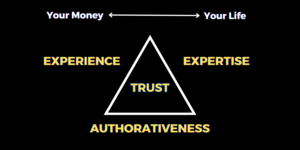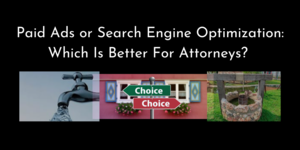Value In Niches
I saw and responded to this tweet from Joe Pulizzi (@JoePulizzi) of Content Marketing Institute.
Penn National buys Barstool
Mailchimp buys Courier
Hubspot buys The Hustle
This trend is speeding up. Valuations are going to skyrocket for niche media companies (yay for media).— Joe Pulizzi (@JoePulizzi)
This is a fact of which businesses are just now becoming aware!
While there may still be a market for widespread, widely-targeted messaging (last night’s Super Bowl being the prime example), the opportunity and margin are greatest and more-easily captured within the niches.
Focusing on Niche Messaging offers two powerful benefits:
- Permission is easier to earn.
- Interactions and engagements are stronger among interested groups.
There is an inherent distrust with advertising (and most business messaging).
The proverbial Cookware Salesman whom the prospect realizes does not know how to cook will struggle to sell the product! Alternatively, Emeril sells millions of dollars of cookware & cooking tools per year never leaving his studio!
If your market sees you as a member and participant of their group (as opposed to someone selling to it), they will seek you and look for the value that you can bring to them.
Having earned the permission to interact, those relationships become a powerful asset in your toolkit.
Update from Edition 30's topic on GameStop, Robinhood, and r/WallStreetBets
There will be plenty of frustration and finger-pointing to come from the shakeout. For those who got caught up in the story and jumped in at what was the highest, their purchases are likely down near $200-$250 per share. A hypothetical $1000 stock purchase a week ago could be down as much as 70%.
Unfortunately, many of those late-arrivers stand to take losses in much the same way that the “Hedge Funds” and other large-scale non-retail investors did.
In last week’s newsletter, I shared a few recommendations that are still appropriate today.
- It is best to have income sources and investments. Don’t conflate them.
- It is best to have a diverse set of investments. Don’t focus on single vehicles.
- It is best to invest in things you understand. Don’t try to make money in things you don’t understand.
- It is best to consider social aspects in your investing. Don’t ignore that humans make up markets.
If you’d like to see more of these recommendations (or would like background on last week’s events), you can read last week’s newsletter in the archive.
For those checking out the book reviews, I finished The Ultimate Sales Machine by Chet Holmes. My post of notes from the book is complete. You can check it out on my blog at this link.
If you would like to read along, I will be starting Content Inc. by Joe Pulizzi soon.
Note: Book links are Amazon affiliate links.

That said...
- Why do we have so many?
- Are they delivering on what we need them to do?
One of the reasons that we have such a proliferation of tools is because many are designed and built to solve a specific problem.
With the pace of change, it is much easier to create specific features & functionalities with limited purposes for targeted audiences than it is to build wider capabilities for diverse audiences.
It is simply much easier to build niche tools targeting specific behaviors than all-encompassing suites.
Noted from the quote above, actions like “Word Processing” may be standard, but our workflows and processes for how we carry out those actions are often unique to a market or a group.
Which leads us to...

If on their desk, you see ‘Post-It’ notes or index cards taped to their monitor with “shortcut codes”, there is very likely something wrong!
We all remember the keyboard-shaped overlays that used to callout and share fast-key arrangements (Cntl-C / Cntl-V) for MS Office.
While many of those functions still exist, we have gotten immensely better at integrating them into workflows helping users to learn so that there’s little need for those legends & productivity assistants anymore.
In all Honesty...
We also need to admit that our tool complexity problem is not altogether the fault of tool creators!
Many of us are also to blame because we seek out and build our workflows around “free” or lower-cost tools that (in their “free” state) only partially solve our problems. Many are built on a “freemium” model and we are unwilling to pay for the full features that we require!
If you can solve your business need/problem with the lower-cost version, then do so. However, when you truly need a better, more complete solution, you are better off paying for it than cursing yourself (and your users) to cobbled feature-sets & workflows-by-workaround.
Remember – Your objective is to profitably deliver value and solve problems!
Focused hyper-optimizations of single steps and activities rarely improve performance and effectiveness overall.
Other Links
5 LinkedIn Lead Generation Strategies That Brought Us 500+ Leads
Expand.io published this list of lead generation techniques that I’m going to have to dig into deeper. In just my first read, they are sharing a number of details for setting up attention-gathering as well as contact-outreach. Definitely, be on the lookout as I’ll share some results of the techniques that I try (as well as thoughts from the tools that I used).
As an aside, you can check out this case study from Sumo.com as well. Since lead generation is such a fundamental aspect for business development, continuous learning, practice, and adaptation of your process is a key component of marketing strategy.
Lead Generation Case Study: How to Get 40,000 Leads Per Month
Website Structure: How to Build Your SEO Foundation
The folks at Ahrefs.com published this good article on website design as well as the development of your content strategy. Unlike the past when we could just post content, stuff keywords, and aggressively use link building strategies to improve search rankings, less (with greater value) is truly more when it comes to earning traffic.
I added a couple more links on this topic below.
A Step-by-Step Guide to Growing Your SEO Traffic w/ UberSuggest
Google Core Web Vitals Hints
Duplicate Content Is *Not* A Negative Ranking Factor
Business Lunch podcast w/ Roland Fraiser
If you aren’t familiar with Roland Fraiser, he is an entrepreneur and business aggregator. Instead of starting businesses, he builds value via partnerships and acquisitions. I got introduced to him a while back via Ryan Deiss of DigitalMarketer.com & Scalable.io) as Roland has been involved in both.
His podcast is definitely one to put on your list!


